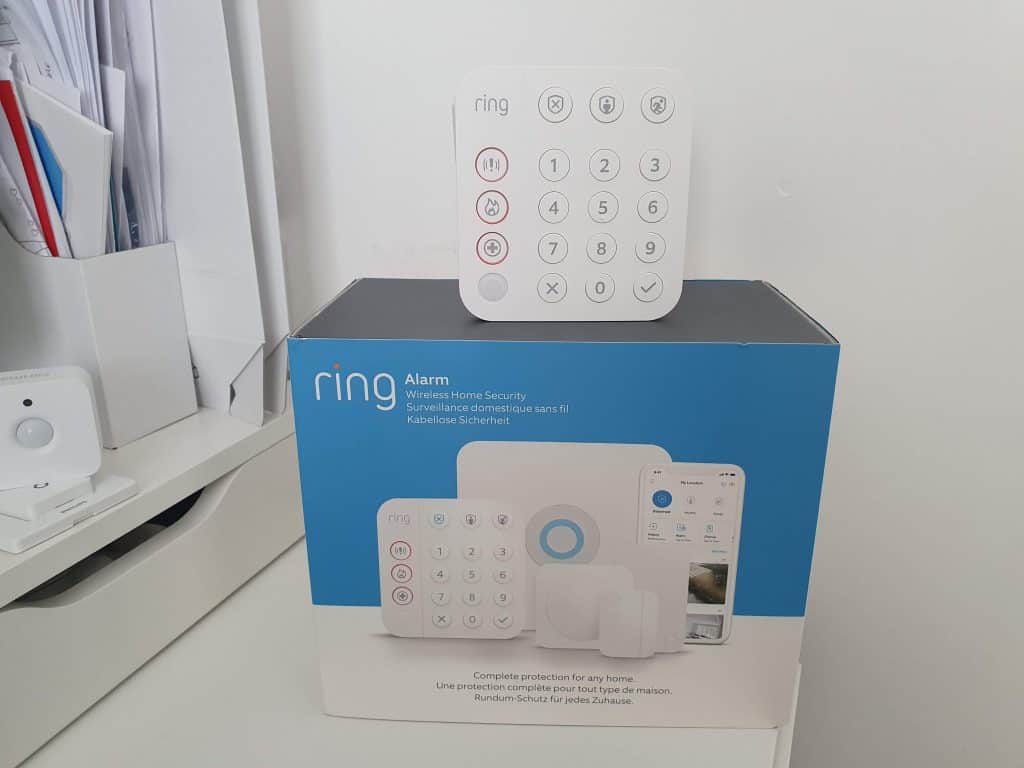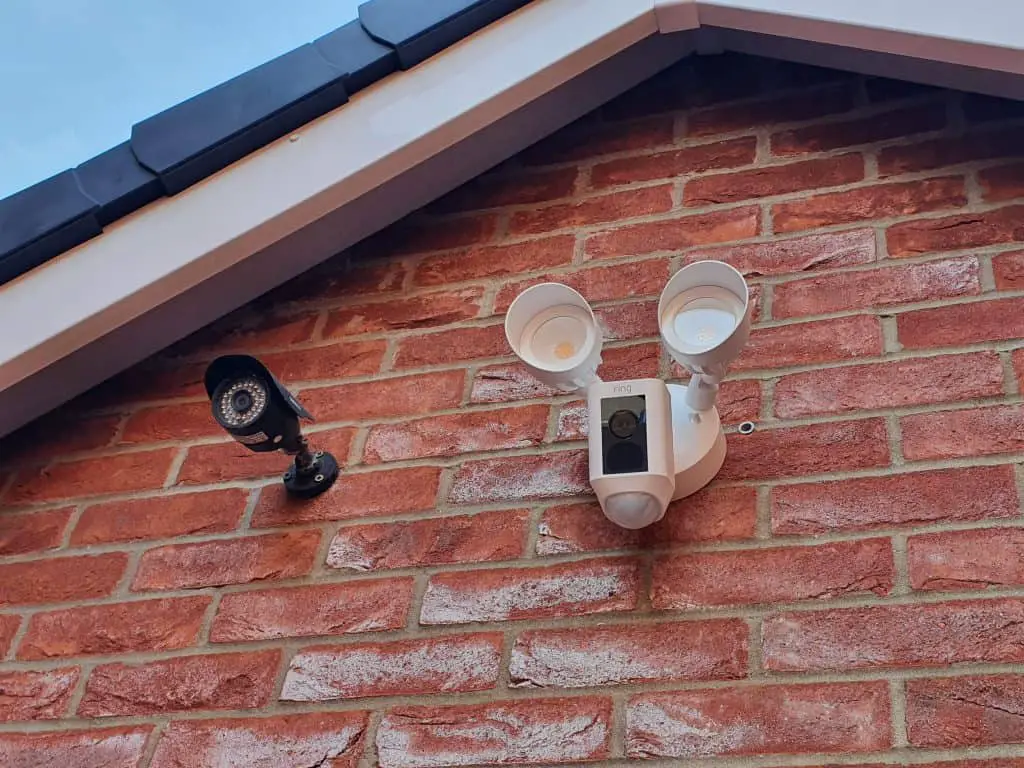Although fantastic security products, Ring doorbells and cameras do have one major flaw: poor encryption system. Their lack of encryption makes them susceptible to hacking, which is everyone’s worst nightmare.
Yes, ring doorbells and cameras can be jammed and blocked, despite what the manufacturers lead you to believe. With a decent Wi-Fi jammer and a bit of tech knowledge, a hacker can gain full control of your home Wi-Fi and incept the information sent to your security system. This leaves you and your home incredibly vulnerable to burglars
In this article, we’ll discuss how Ring doorbells and cameras get hacked and how to prevent it from happening.
Before that, let me ask you this: have you ever wondered how Ring doorbells and cameras work?
How Do Ring Doorbells and Cameras Work?

There are over 10 different Ring doorbell and camera models. While most come with their own unique functions and features, they all follow the same exact principle.
According to the official website, Ring systems create a “ring” of security around your home through the help of your home Wi-Fi network. Whenever someone approaches your door, your Ring system will immediately alert your Ring application and/or Echo device.
You’ll then be able to see and hear the person on the other side of the door, where you can speak to them using two-way audio communication.
Sound and video footage are automatically sent to Ring’s servers because the system doesn’t have built-in local storage. To send said information to the server, the device must be connected to a local network or the footage and audio will be lost.
Inside the doorbell is a motion sensor, camera, microphone and, speaker, and a wireless antenna. When someone presses the bell’s button, it sends out a short-range wireless signal using a radio frequency. The Ring Chime device picks up this RF signal, which converts it into an audible chime so you know someone is at the door.
At the same time, the motion sensor triggers the doorbell’s camera to start recording video. This video footage is transmitted from the camera over WiFi, through your home’s WiFi router, and eventually to your smartphone, where you receive a notification that someone is at your door. You can then open the Ring app to view the live video feed and communicate through the doorbell’s mic and speaker.
So, in summary, the Ring relies on a short-range RF signal to detect button presses and trigger its modes, while the video footage and notifications are transmitted wirelessly over WiFi back to your phone. Neither communication method uses a direct cellular network connection.
If hackers jam the device, the system won’t be able to record or even alert the homeowner of the intruder.
How Do Ring Doorbells and Cameras Get Hacked?
With the rise of technology and social media, hackers and criminals have become smarter and more efficient. This isn’t good news for us homeowners, as it leaves us at an even higher risk of security breaches and the like.
Ring security products, including doorbells and cameras, are connected through the internet – which is naturally a risk – so your security can potentially be intercepted by third parties.
Some of Ring’s communications can also just use HTTP, not the more secure HTTPS, which is an added risk.
More than 80% of websites are protected with HTTPS secure encryption, primarily because the system uses TLS (SSL) to encrypt normal HTTP requests and responses. You won’t find this technology in HTTP connections.
Although nothing is truly 100% secure, manufacturers do their best to protect and hide user information to prevent unauthorized third-party access. Unfortunately, Amazon—Ring’s manufacturers—seem a bit laxer in terms of security than other security system suppliers.
Amazon’s Ring has been sued countless times over the past few years, and although some improvements were made, it’s still not as secure as its competitors.
In 2019, over 3,000 Ring usernames and passwords ended up online. Hackers obtained this information from a credential stuffing attack rather than the company’s databases.
Since people tend to use the same credentials for most of their online accounts, most of these attacks were successful. This incident wouldn’t have happened in the first place if Ring had a more solid security protocol.
Hackers hack Ring doorbells and cameras using two methods, namely:
Password Spraying
Password spraying is a method in which hackers use multiple common and default passwords to brute force their way into your account. It goes without saying that the weaker the password is, the easier it’ll be for a hacker to gain access to the device.
Ring doorbells and cameras with common or weak passwords are among the first that fall victim to these attacks. This is why cybersecurity companies recommend changing your account passwords once every month or so.
Wi-Fi Jamming
Wi-Fi jamming, as the name suggests, “jams” or interrupts Wi-Fi and Bluetooth communications to prevent the transmission of alarms within wireless security systems. Once the Wi-Fi is jammed, hackers have free reign of the home without worrying about alerts and security measures placed by the homeowners.
Wi-Fi jammers intercept system communication through a device known as Wi-Fi jammers or simply jammers.
Jammers are sold for as cheap as $5 and can be bought from less-than-reputable technology centers and online markets (i.e., AliExpress, Made-in-China, Wish). These devices are illegal to own and use in the US.
According to US Federal law and the Federal Communications Commission (FCC), the operation, sale, or marketing of any type of jamming equipment is strongly prohibited.
But how do jammers work, exactly? It’s much more straightforward than you might have initially thought. Wi-Fi relies on radio frequencies to send signals between devices. To receive said frequencies and the information found within, the radio receiver (internet router) needs to obtain waves of certain frequencies—particularly 2.4Ghz or 5Ghz.
These frequencies create a clear path that allows the receiver to send information to the device (security system).
Jammers prevent the transfer of data by creating “traffic” in a local area, effectively blocking the path between the receiver and the device.
Said traffic will overpower the Wi-Fi signal, thereby causing a lapse in communication between the router and the security system. Due to the lack of connection, the security system will fail and render it useless.
How Do You Prevent Your Ring Security System from Getting Hacked?

Security breaches are threats that must be taken extremely seriously. In a single year, over one million burglaries are committed. Although most were spur-of-the-moment decisions, a decent chunk of these invasions was planned in advance.
Wi-Fi-powered security systems may pose potential dangers to you and your family, but this doesn’t mean you should stop using them. If you’re planning to use Ring doorbells and cameras, never fully trust the company and take the necessary precautions yourself.
Use a Strong Password
This advice is simple yet important. Since 2017, over 500 million passwords have been stolen from unsuspecting victims and sold to the dark web. 51% of internet users use the same password for their work and personal accounts, making it even easier to gather information and hack system accounts.
Prevent this by using a unique password for both your Ring account and your Wi-Fi network. If possible, use a combination of numbers, symbols, and upper- and lower-case letters for your password. Likewise, try using phrases instead of a single word or name.
In addition, consider using two-factor authentication. Thankfully, Ring enabled mandatory two-factor authentication in 2021 for most users. This is great news for Ring users, as it adds an extra layer of protection that makes it harder for hackers to crack.
Even so, these measures don’t guarantee your security. This is why you should always use an extra-strong password for your security devices.
Invest in a Firewall and Antivirus Software
By purchasing a standalone firewall and/or antivirus software, you’re protecting not only your home but also your personal online information. A reliable antivirus or firewall solution prevents unauthorized intrusions and third-party access.
Keep the Software Up-to-Date
After the massive attack in 2019, Ring has made great improvements to its security systems. Therefore, you should always keep your software up-to-date as it may come with essential security patches and network solutions.
This includes the device software, the Ring app, your Wi-Fi device, and your antivirus solution.
Most of these updates will happen automatically, but if you ever remember disabling automatic updates, you might want to review this setting now!
Consider a Non-Wireless Device

Security systems that rely on Wi-Fi networks have one major flaw: the wireless signal can be jammed.
Prevent this by investing in a non-wireless device like the Ring Doorbell Elite. Unfortunately, Ring has yet to produce a security camera that doesn’t run on Wi-Fi, so you might have to go looking for another brand like the Arli Go or the Reo-Link Go.
The Ring Doorbell Elite is immune to Wi-Fi jamming because it draws power from an Ethernet cable. Although more expensive than regular Ring products, the investment is worth it if you use your doorbell as a security measure.
Alongside the non-wireless device, it’s also worth purchasing a backup device that automatically turns on if the primary system fails. CCTV cameras, analog cameras, HD-over-coax cameras, and IP cameras are brilliant backup solutions that don’t require Wi-Fi.
Activate Protected Management Frames
Protected Management Frames aren’t available in all routers, so this technique, unfortunately, doesn’t apply to everyone.
If your router does support 802.11w PMF, it’s worth enabling it. PMFs are designed to prevent third-party attacks like honeypots, disconnects, and evil twin attacks. Jamming attacks that rely on disassociation won’t be able to block a PMF-enabled security system.
Place the Chime and Router Near the Ring
- Position your WiFi router and Chime device as close as possible to the Ring doorbell itself. This maximizes the chance they will pick up the initial RF signal before it can be jammed.
- The WiFi router should ideally be in the same room, within 15-20 feet if possible.
- The Chime device should be installed on the same wall, again within around 15 feet for best results.
Install a WiFi Range Extender
- Strategically place a WiFi range extender in between the Ring and your main router, closer to the doorbell.
- Choose an extender capable of boosting both 2.4GHz and 5GHz WiFi bands.
- Follow the manufacturer’s instructions to optimize the extender’s placement and settings for your home.
Switch to a Dual-Band Router
- Upgrade to a more powerful router broadcasting on both 2.4GHz and 5GHz WiFi simultaneously.
- Look for a model well-suited for larger homes and with high wireless output power.
- Opt for routers with advanced wireless technologies like MIMO, beamforming, bandwidth steering, and implicit beamforming.
Enable Automatic Frequency Hopping
- Many modern routers have a setting that enables them to automatically change broadcast channels/frequencies to avoid congestion and interference.
- This feature goes by different names for each manufacturer but essentially allows the router to hop frequencies.
- Enable the feature and set the channel range as wide as possible – this prevents a jammer from easily tracking the frequency.
Consider an LTE Enabled Ring Doorbell
- Ring now offers video doorbell models that have LTE cellular connectivity built-in.
- The LTE connects to cellular networks instead of relying solely on WiFi, providing guaranteed connectivity.
- If available in your area, installing an LTE-enabled Ring essentially sidesteps potential WiFi jamming.
Watch for Signs of Jamming
- Be alert for any indicators that your Ring or WiFi may be getting jammed, like spotty WiFi coverage in certain areas or sudden drops in connectivity.
- Physically check for unknown wireless networks appearing on your phones or laptops, which could indicate a jammer nearby.
- Run a site survey using WiFi analyzer apps to check if unknown signals show up during suspected jamming.
Report Suspected Jamming Activity
- In many countries including the U.S. and Canada, using or selling WiFi jamming devices is completely illegal.
- If you experience jamming attacks on your Ring or WiFi network, report the incident to police and your local authorities.
- This helps law enforcement track down sources of malicious jamming. Don’t ignore the problem.
Conclusion
Ring doorbells and cameras are double-edged swords. On one hand, they provide top-tier security at an affordable cost. You don’t even have to pay for monthly contracts like most security systems. On the other hand, they don’t utilize strong encryption methods, making them susceptible to unauthorized attacks.
By taking the proper precautions, the risk of someone actually jamming your Ring doorbell is relatively low. But being aware of the potential issue and following wireless security best practices will help minimize the chances of a jamming attack succeeding on your home security system.
With a few smart installation choices and router settings adjustments, you can have peace of mind knowing your Ring device is active and alerting you of any visitors at your door, while also being as jam-resistant as possible.
Don’t worry, though; as long as you follow the security measures above, your home will be protected from snoopers and intruders. Good luck!
